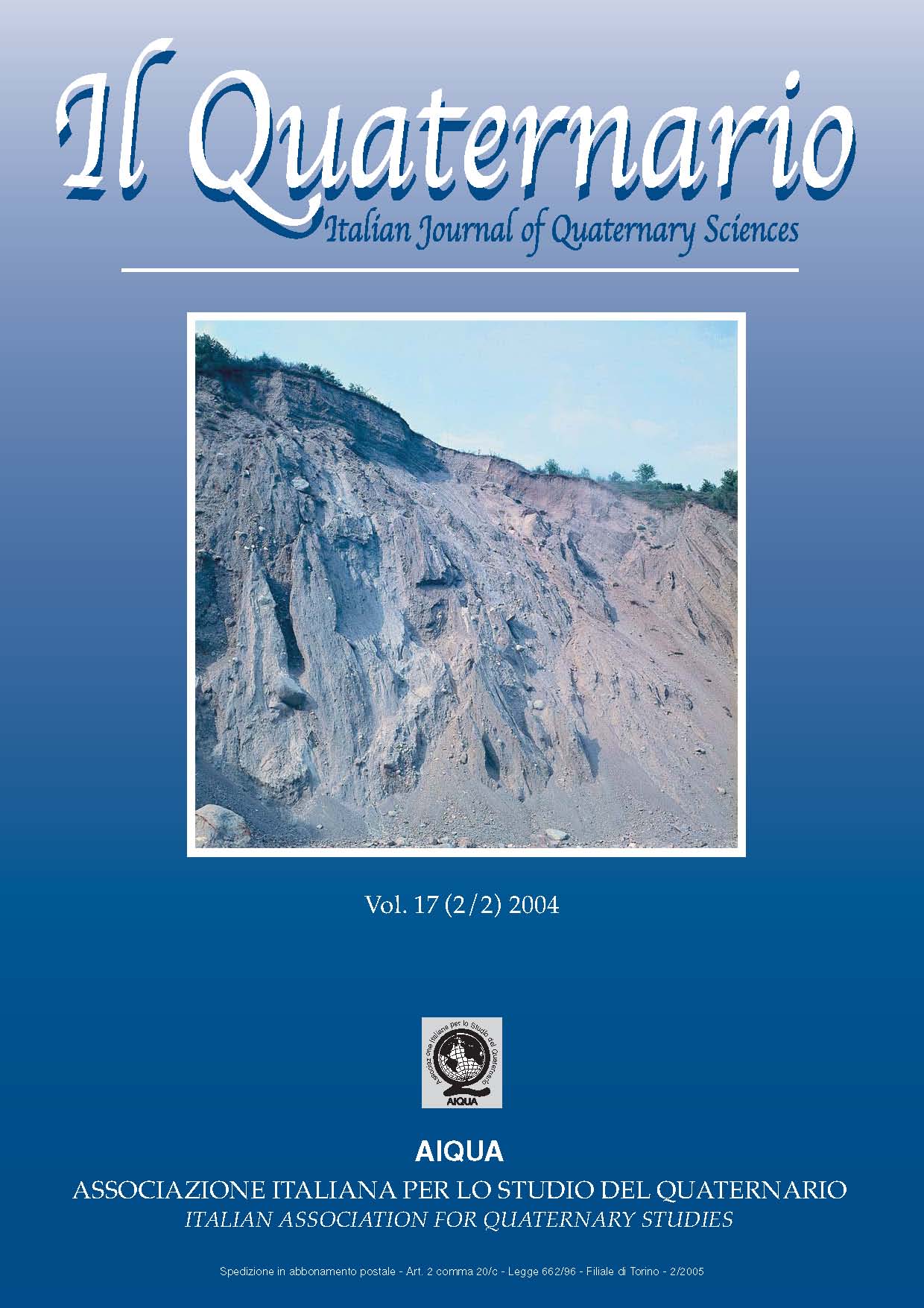PROBLEMATICHE GEOLOGICO-TECNICHE DI FORMAZIONI SUPERFICIALI SOGGETTE A VARIAZIONI DI VOLUME
Main Article Content
Abstract
C. Meisina & L. Rolandi, Engineering geological problems related to swelling-shrinking superficial deposits. IT ISSN
0394-3356, 2004.
The volume changes of clayey soils (shrinking in the drought periods, swelling in the periods of rainfalls) are the cause of many problems in engineered structures. Global climatic changes as prolonged period of dry weather, influence soil moisture content and are the primary cause of volume changes of clayey soils in temperate regions. In Italy most of these soils are associated with alluvial deposits and eluvial-colluvial soils derived from sedimentary rocks by weathering (superficial deposits). The aim of the work is to underline the engineering geological problems related to the study of the superficial deposits characterized by volume changes. The test site is the urbanized area of the town of Varzi (Northern Italy, Pavese Appennines) built on the alluvial and eluvial-colluvial deposits. The lithological setting and geotechnical characteristics of these deposits are poorly defined, due to the lack of outcrops and the intrinsic heterogeneity of the sediments. Engineering geological mapping was carried out to provide engineering geological information as an aid in planning land use. The adopted approach has been multidisciplinary, such that data regarding the geology, geomorphology, hydrographic network, urban development and history of the town area have been used to develop a geological/geotechnical model of the area. In the first step the landforms (alluvial terraces, landslides, alluvial fans, etc.) were mapped from aerial photographs. In the second step for each landforms the nature of surface materials (lithostratigraphic, hydrogeological and geotechnical characteristics) was determined. The datasets included boreholes, trial pits and penetrometer tests. Geotechnical and lithological profiles have been constructed. The geotechnical site investigations had the aim of characterising the soil conditions within each homogeneous zone and consisted of pits with a maximum depth of 3 m for the shallow soil exploration, the soil profile description and the collection of samples in the areas representative of the engineering geological terrain units. In addition to the classical mineralogical and geotechnical tests (index properties and volumetric characteristic determination) the samples were submitted to the methylene blue adsorption test, to the swelling pressure and swell strain tests and to the determination of the suction with the filter paper technique. Engineering geological zoning was carried out by assessing main attribute groups: genesis, topographic conditions (slope angle and drainage), lithologies, geometries, hydrogeological (depth to the water table, hydraulic conductivity) and geotechnical characteristics. The area was divided into 13 morpho-engineering geological units (areas that may be regarded as homogeneous from the geomorphological and engineering geological point of view) analyzed in terms of swelling-shrinking susceptibility.
Article Details
Section

This work is licensed under a Creative Commons Attribution-NonCommercial-NoDerivatives 4.0 International License.
The Author grants usage rights to others using an open license (Creative Commons or equivalent) allowing for immediate free access to the work and permitting any user to read, download, copy, distribute, print, search, or link to the full texts of articles, crawl them for indexing, pass them as data to software, or use them for any other lawful purpose.

